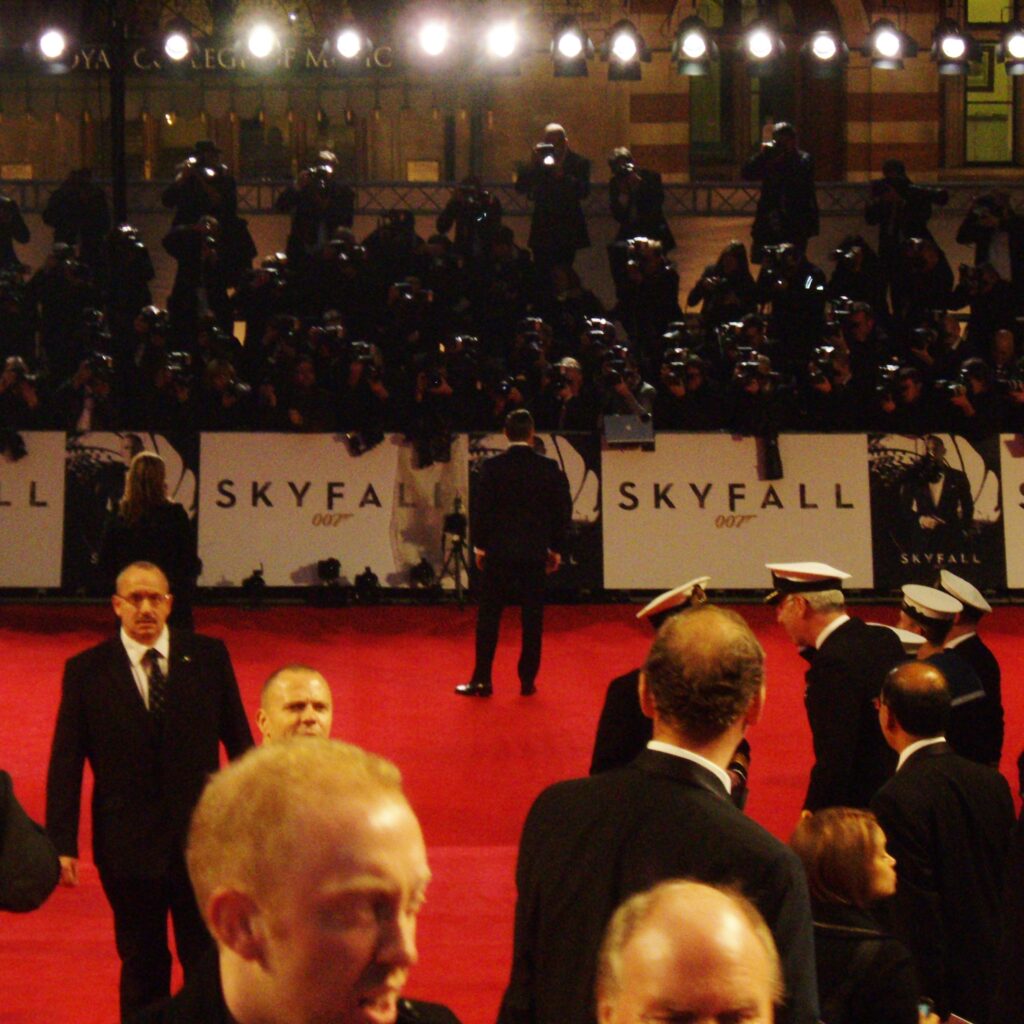
From the opening shot of Bond emerging from the shadows at the bloody end of a Turkish shoot-out via the murky corners of cyberspace, the neon silhouettes of a Shanghai sniper attack and the measures a villain takes in order to hide and avenge his own physical phantasms to an ancestral pad that is now decaying in them, Skyfall is all about the shadows. But as Daniel Craig undeniably emerges from the ones of his predecessors, director Sam Mendes and Eon Productions’ 50th anniversary Bond opus is – to quote Skyfall’s accidental poet laureate Tennyson – “one equal temper of heroic hearts”. Proving the healthy sense of collaboration between Daniel Craig and creative house Eon Productions, it was 007 himself who gave director Sam Mendes his mission. And what a moment of apt serendipity as Skyfall is easily the finest end result of the re-pointing project of James Bond 007 as started by producers Barbara Broccoli and Michael G Wilson as far back as 1995’s GoldenEye and matured like a bottle of ’62 whisky in Casino Royale and Quantum of Solace.
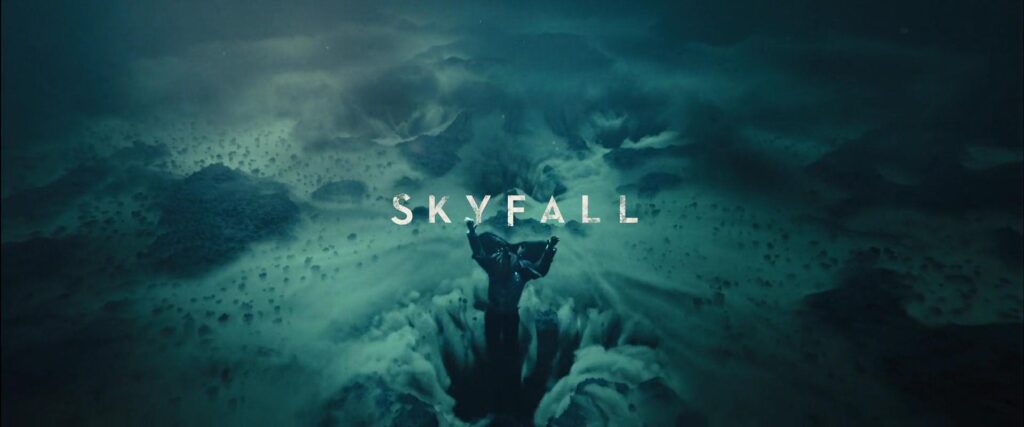
“This is the end” starts London songstress Adele as Daniel Kleinman’s watery title girls pull Daniel Craig into a riverbed vortex of bleeding target silhouettes, dagger shaped headstones and skulls with tombstones for teeth. The first solo artist for a while to be at the absolute peak of her game when belting out a 007 song and the first song since GoldenEye to be about an actual plot MacGuffin, Adele is a natural choice for a very London and very British Bond film. With crystal-clear lyrics, Paul Epworth’s pristine production and those twirling Bassey wrists underscoring every beat, Ms Adkins soars and “stands tall” with Kleinman’s artistry.
One title girl’s slo-mo gun to camera turn is as gloriously 1970s Bond as that continued use of a font that should surely by now be officially named Binder (after Bond title innovator, Maurice Binder). The baronial sweep of Skyfall and its’ stags, thorny pathways, Chinese dragons rolling at the audience like Victorian phantoms and the Bond family graves all vying for deathly prominence proves is the most gothic title sequence since Live and Let Die with its animated urgency, warped shadows and shattering hall of mirrors. Sorry Ms Adkins, but if Skyfall’s objets d’ark opener proves anything, there is no “end” in sight for Bond just yet.
‘Life clung to me like a disease.’
RAOUL SILVA. SKYFALL
As Bond villains become ever more complicated and potentially harder to get right, Javier Bardem supplies a literally jaw-dropping panache as bad boy Raoul Silva. Sadistically prissy with a dye blonde mane of hair and a Karl Lagerfeld sense of cosmetic vanity and pinched eyes, Silva’s look alone purposely doesn’t stack up – and his line in 1970s lounge wear straight from the wardrobe marked “Roger Moore” is just as nasty. This is a glorious Pedro Almodóvar queen of a rogue, a Villain on The Edge of a Nervous Breakdown.
Without lending Silva a solid and familiar manifesto to upturn the world with a deliberate caper of monetary gain or global one-upmanship, Mendes and his writers’ Neal Purvis, Robert Wade and John Logan forever jar proceedings with Raoul. From his curious entrance via a slow-arriving elevator with echoes of The Rocky Horror Picture Show’s Frankenfurter (“don’t get strung out by the way I look”) to an unsettling anecdote about changing the killing instincts of rats, Silva purposely just doesn’t stack up. The sick relish in which a captured Raoul zips up his prison uniform aware he is about to escape is jarring. The non-regulation thick blonde hair under a policeman’s hat is jarring. Silva cutting an almost underground Nosferatu shadow when Bond ups the lights is jarring. Even just seeing Bardem on the London underground alone is jarring. And when those Catalonian eyes of Silva’s roll with anger at the chance of helicopter ride home being somewhat diminished or when Bond fires at some fire extinguishers to curtail a tribunal room shoot-out, Bardem’s simmering spite is as instantly memorable as Gert Fröbe idly scratching his eye “expecting” Bond to die in Goldfinger or Robert Shaw’s unnerving attempts to bromance 007 in From Russia With Love.
And taking the Almodóvar reference to its logical conclusion, Bardem literally ties Bond up and ties him down to give him a bad education about his real feelings for our man James and the skin that he lives in. Actually, if Pedro hadn’t got there first, Skyfall and its ‘mommy’ issues could well have been christened All About My Mother. As Silva unbuttons 007’s Tom Ford shirt and lets his fingers do the wandering it is not a bullet scar that he is interested in finding, but rather sexual ones suggesting he could be in with a chance with Bond. M’s star pupil and the school reject should really not be playing playground bouts of “I’ll show you mine if you show me yours”, but it is a glorious move on the writers’ part to threaten Bond not with lasers, tarantulas or ball-busting ropes, but a villain’s hand stretching optimistically towards His Majesty’s crown jewels. Casino Royale’s Le Chiffre certainly got his man-crush eyes on Bond first. But now 007 is the victim of sexual harassment by a literal undressing against his will and an even more blatant sexual deviant than himself. Cue co-writer John Logan and his pièce de irresistible thunder-curveball and the best Bond-mot we have heard for a long time – “what makes you think this is my first time?”. In that one line a smirking Craig appeases those who suspected his 007 could be the one to suggest such sexual inclusivity – why wouldn’t Bond toy with a guy to move a mission on – but also suggests our man James is possibly a true Etonian after all.
Silva’s party piece is grotesque, the nearest the 007 series has stepped towards horror since 1973’s Live and Let Die and a viable reason why title designer Daniel Kleinman utilizes all those melting skulls and burning veins. Whilst Mendes and the film possibly misses a trick to return to that jaw-dropping motif in the finale – how much more creepy could Bardem have been if Silva lost his ‘smile’ when forcing his gun and himself on his last act victims? – it is still a gorgeously outrageous gesture that in one grisly flourish justifies Silva’s Bond villain tag and Bardem’s high praise in the role. In Skyfall, he is both the devil and the detail. And the only Bond foe to ultimately get what he wants.
Taking a role that was possibly a tweed-jacketed cliché, the gently mischievous Ben Whishaw is a deliciously impish Q soulfully aware though of both the “inevitability of time” and his Earl Grey tea. Removing the dusty red tape and pratfall confrontations of previous incumbents, Whishaw turns his Palo Alto geekery into a consequence-shy beatnik quicker than it takes to shelve the use of “exploding pens” with a winning grin even Bond can agree with. A Zuckerberg generation wolf in a sheep’s cardigan, this Q takes the hackneyed out of hacking with a learned temperament beyond his years as his darting eyes betray a panic and human concern beneath. Armed only with a Q-mug of Earl Grey, Whishaw works the late shift to control-alt-delete Bardem’s rather anti-social network, yet all the time keeping that vital impatience with Bond (“of course there are people everywhere, welcome to the rush hour”) as well as displaying a quiet love of art history to underline how Turner’s “grand old warship being ignominiously hauled away for scrap” is of course M’s plight in Skyfall. “Age is no guarantee of efficiency” defends Whishaw as the institution of Q points the finger at the 007 series itself. Mercifully, astute casting in Bond is always a “guarantee of efficiency”. And there is no more efficient use of scant screen-time than at the hands of the villain’s lady stooge, Séverine.
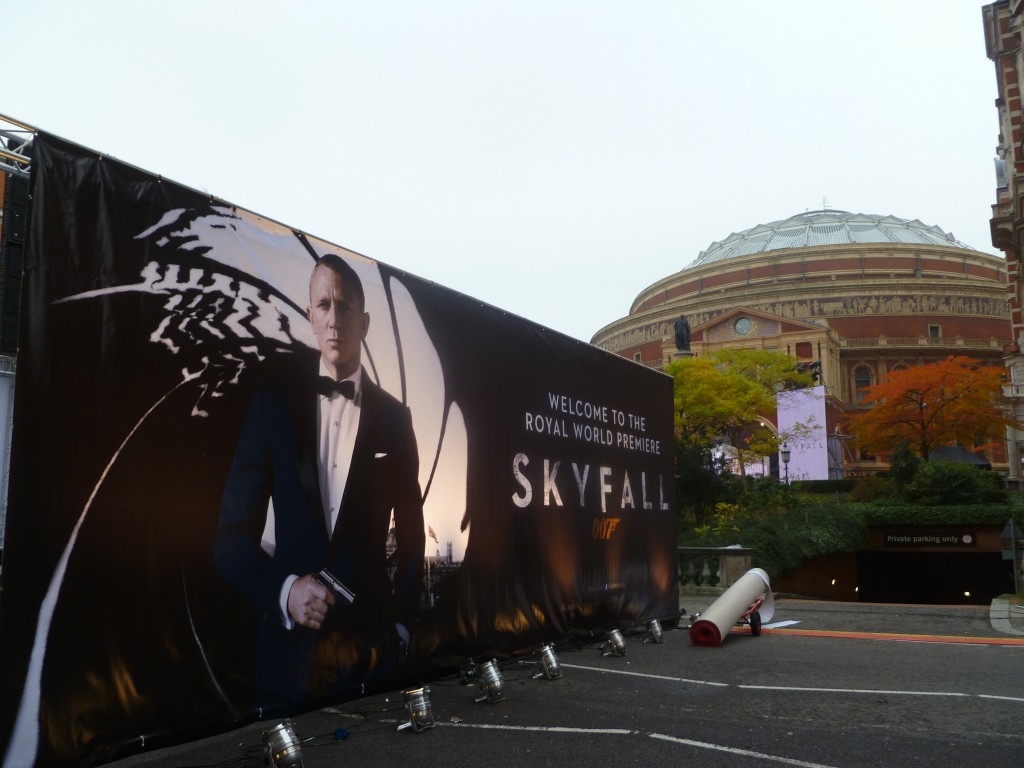
Photo / Mark O’Connell
Making scene-stealing swipes at any clichéd attempts to ‘update’ the Bond women, Bérénice Lim Marlohe’s Séverine is old-school personified with a grimly prescient backstory of child prostitution and an apparent lifetime of abuse. A Bond film is almost only as good as those first exchanges with a chanteuse by the baize tables of a casino. Skyfall is no exception as Marlohe acts Craig off his Macau barstool with her sinking face and quivering talons forecasting with a chill the malicious evil of Silva that is about to come (“what do you know about fear?”). Already a walking obituary to every first-act Bond girl, Marlohe soon cuts a sinewy, staggering silhouette as she and Bond are led through a Planet of the Apes style abandoned city crumbling quicker than Séverine’s hopes of a final salvation. In a series of films whose first-act lovelies have written the book on elaborate and memorable deaths, Séverine’s curtain down is a stark William Tell moment of a balanced whisky shot as Bond’s nervous gun hand refuses to play Silva’s sick games.
Casino Royale and Quantum of Solace made conscious, successful strides to reset the character of these films, to have no back story connected to what went before (except perhaps the continued casting of Judi Dench as M). One of the joys of Skyfall is that with three films in Daniel Craig is now able to trade on his own previous 007 outings. A curt instruction to Naomie Harris’s Eve to take her finger away from her radio earpiece recalls Craig’s earlier pet hate at some uncouth field agent’s identical faux-pas in Casino Royale. Being strapped to a chair as a male villain peacocks around him sees 007 yet again become the non-simpering heroine tied to the railway tracks of a villain’s sexual proclivities. A line of dialogue about knowing when a woman is scared quietly recalls the tragedy of Vesper Lynd and the last time Daniel Craig set foot in a casino. Just as Judi Dench’s M once declares in GoldenEye (1995) how “unlike the Americans, we prefer not to get our bad news from CNN”, that is exactly how the ‘dead’ James Bond is pulled into the mission of Skyfall when a TV in a backpackers beach bar breaks word of MI6’s misfortune. However, after three films where Bond is caught in the early hours necking M’s home stash of Bourbon you’d think the head of MI6 could install some decent locks.Daniel Craig is on blistering form in Skyfall. Clearly dedicated to the fitness, motivation, purpose and presentation of the James Bond character like no-one before him, his is now a Bond that lets a grin in on the edges. The writers continue the conscience of the character as laid out in Royale and Solace – a recurring concern for a dying fellow agent Ronson and a refusal to put him out of his misery hints sees Craig’s Bond now guided by his scruples rather than wrestling with them like before. The moment when a chapel-bound Bond nurses a dying friend with his childhood guardian looking helplessly on is an agonising beat for the Bond series. Never before has Bond been seen as the orphaned boy with literally no-one in the world left. But Skyfall, Mendes and Craig pull that off without once derailing the granite emotions of the very insular Commander Bond. If anything, his newly re-formed MI6 family are now of greater emotional relevance than ever before. It is not just the returning cinematic iconography of reuniting all these figures for the first time in a while that causes an inward cheer. You are glad Bond has those characters back in his life because this lone white knight has no-one else.
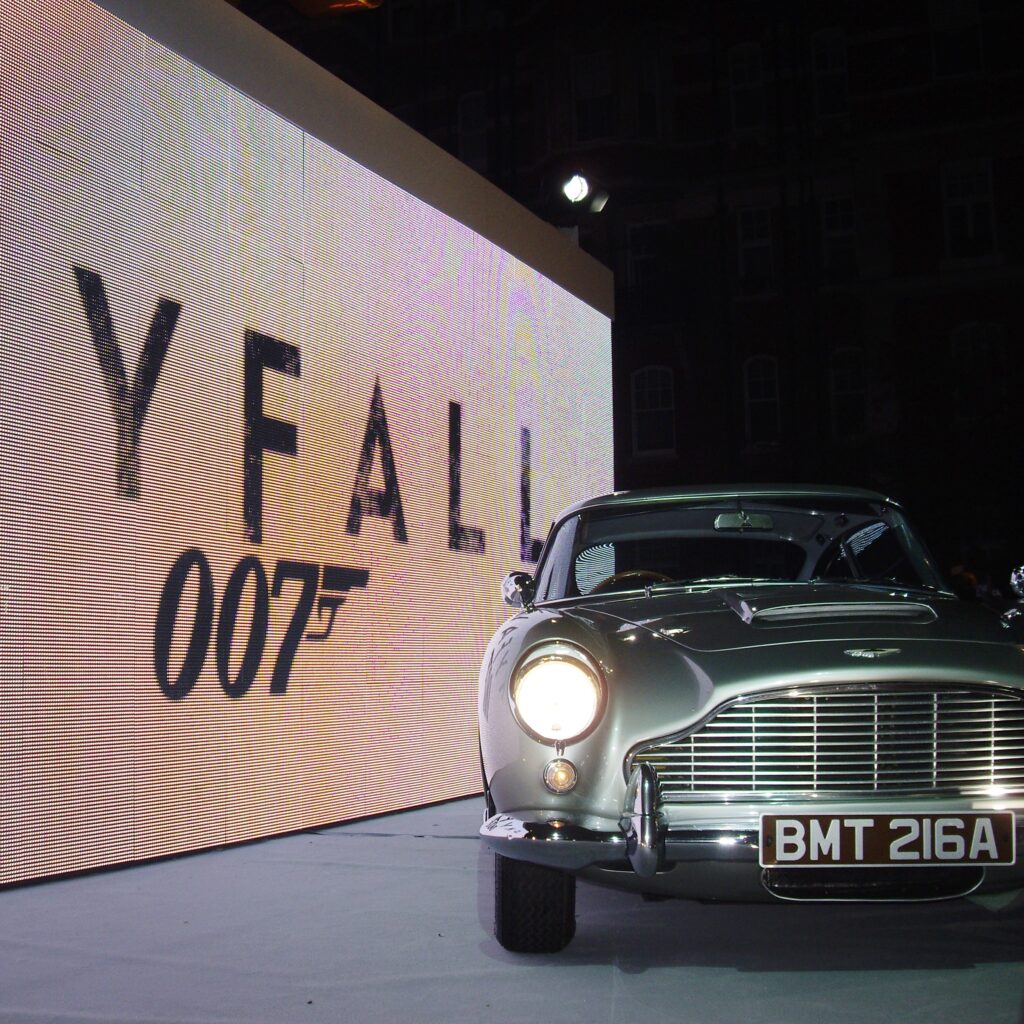
As expected this fiftieth anniversary entry honours the expected beats of a Bond movie – not least the score. Composer Thomas Newman (American Beauty, Wall-E) continues his penchant for Celtic undercurrents and slithers of governmental intrigue, replacing his trademark Americana from the likes of The Horse Whisperer, Revolutionary Road and Meet Joe Black for The Iron Lady’s sense of Westminster machinations and corridors of power. Funereal bugles and brass add sombre flourishes to the beginnings of M’s downfall alongside a gloriously camp and 1930s serials sense of matinee villainy as Séverine’s yacht steers toward the Skull Island that is Silva’s not-so palatial residence.
And we have a barnstormer of a Bond Arriving moment as Newman’s swelling strings and Daniel Craig glides in upright on a Macau casino boat flanked by fireworks, elaborate dragons, floating lanterns and Roger Deakins’ lush cinematography. A detour to Shanghai provides an elevator-grab straight out of a You Only Live Twice Tokyo break-in as billboard neon jellyfish turn a silhouetted bout of fisticuffs into a Maurice Binder underwater skirmish. Brief touches honour the golden milestone of Bond – Silva has a bottle of ’62 whisky, an apocalypse wow moment sees John Lee Hooker’s ’62 Boom Boom ignite the finale attack from a helicopter tannoy, M’s Cadogan Square homestead is not a million metres from where John Barry resided in the 1960s, Fleming’s favourite city Istanbul overtures proceedings and a quick step on the back of a komodo dragon surely bares its teeth of homage to, once again, Live and Let Die. And of course the Aston Martin DB5 is brought out of storage for the audiences to let out their biggest cheer and to cut a stark sight in the imposing hills of Glencoe – the location of both one of Scottish history’s most infamous massacres and that of James Bonds (it is where his parents mountain-climbing parents Andrew and Monique met a death with their own skyfall, thus shaping our man James and his outlook on the world forever more).
Like all the Bond films, the DB5 of Skyfall is a silvery sidekick to Bond and a valued member of a ragtag, small unit of anti-Silva defenders making do in a shadowy old baronial seat. When an approaching line of Silva’s men drop into the horizon like armed plunderers from Peter Weir’s Witness, it is the DB5 that is the last line of defence before Bond, M and Albert Finney’s benevolent gamekeeper Kincade have to go all Straw Dogs on Silva’s men.
But Skyfall’s best nod to its heritage is how Mendes, his writers, cinematographer Deakins and production designer Dennis Gassner craft a near-airtight narrative made up of cause-and-effect character judgments, motivations and outcomes. Nothing is left hanging in Skyfall. Except perhaps Bond dangling above a Shanghai skyline in a Vertigo moment of back-projection just that bit cruder and less ‘realistic’ than it should be. The end result of that quick beat is an instant time-machine back to mid-1960s Connery and the back-projection trickery that has curiously aged less than Brosnan’s CGI tsunami kite-surfing debacle.
Following the examples set in Casino Royale and Quantum of Solace, the set pieces in Skyfall are all about Bond – not the stuntman’s union. Even in a sea of MI6 bods and tribunal ministers (a tenet of the Brosnan years), Deakins and Mendes keep their story and camera focus simply on M, Mallory and Tanner. The resulting shoot-out is a gun-slinging bout of story-forwarding character decisions, not second unit fireworks. And when Bond sprints through the chaos of panicking emergency services, MI6 allies giving instructions from the crow’s nest of cyberspace and Thomas Newman’s stately score it is that lone Daniel Craig that emerges as centrepiece, the real English lion of Skyfall and this rich era of 007.

In Gassner’s most expressionistic of MI6 bunkers, a busy sea of typists and desk elves are visible but the drama resides in Mallory, Q and Tanner on their own in this bunker after hours. A Macau casino is a gorgeous timber den of croupiers with fierce silver fringes, stocky Korean heavies sans killer hats, leggy lovelies walking through frame at that slow Pinewood extras pace and komodo dragons lurking beneath the floorboards like SPECTRE piranhas. The Macau moments have a brilliant sense of 007 artifice about them, a thumbs up to former design maestro Ken Adam proving that you can take Bond out of Pinewood Studios, but you cannot and – must not – take the Pinewood out of Bond.
London has featured or been referenced in nearly all the Bond films, usually via a quick cut-away of a red telephone ringing on M’s desk or a red bus passing the MI6 building old and new. Yet this is not London through a 101 Dalmatians lens. The red, white and blue of the Jubilee, the Olympics and even Craig’s notorious parachuting monarch moment are now usurped for a more tangible London of squealing paramedics, Metropolitan police stab vests, Vauxhall Bridge holds ups, tube barriers, dirty lock-up garages and, er, Clapham high street. A Union Jack flag may symbolically stand tall with a closing-scene Bond surveying all that he protects, but the iconic emblems are first seen draped over the coffins of the MI6 dead. This is a 2012 without tourist pageantry and vistas. Deakins’ shots of Trafalgar Square, Whitehall and Westminster are street level – no Bond Arriving grandiosity on the home turf here. From Tottenham girl Adele on opening crooning duties and the National Portrait Gallery lending Ben Whishaw’s Q and Bond a great water-cooler moment under the seafaring watch of Turner’s ‘The Fighting Temeraire’ to the shadows and catacombs of unused tube lines and a Churchillian porcelain bulldog stressing M, Bond and the 007 series steely resolve, this is curiously both the London of empire and post-empire – a possible nod to the Connery years and the crossroads of past and future they carefully positioned themselves in.
The Blair-ite era of the MI6 years in Vauxhall is here resigned to an aged oil painting of said building behind a very familiar oak and mahogany strewn office with a stage-right leather door and a leather-topped desk purpose made (or taken out of Pinewood storage) for dropping Eyes Only documents and passports onto with boss-like urgency. MI6’s London is now stepping away from the capital of the Pierce Brosnan years (with its video-walls, glass partitions and holographic training programmes) towards a bespoke, possibly Tory-inspired modernism more akin to the Robert Brown as M / Universal Exports years. But instead of the hierarchy of cigar-fuelled gentlemen’s clubs, this is a MI6 made up of ‘Northern Ireland’ veterans, field agents who are not the best shot, filthy temporary digs, Bond in regulation trainers, presumed dead operatives seeing their homes sold off in an instant and agents who get passed without meeting medical criteria. Ralph Fiennes is a clever bridging measure in Skyfall. Initially pitched as an incisive bureaucrat in braces, his quiet approval of M and Bond and eventual less quiet support of them and their principles is one of the joys of Skyfall. In an era of cinematic moles and Tinker Tailor Soldier Spy remakes, it is refreshing just to have a governmental meddler who is doing so for the right reasons. As Fiennes’ Mallory rolls up his sleeves to muck in when the finger-pointers have long clocked off, that sage-like Whitehall wisdom is no longer a smokescreen. It is who Mallory is going to be. And not just in this film.
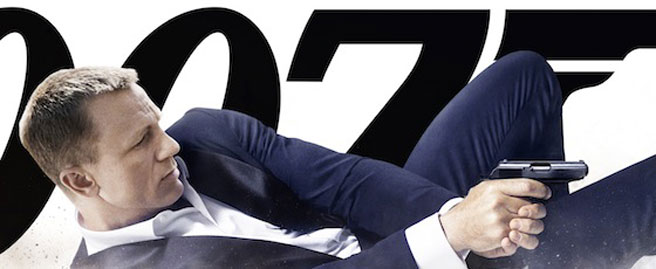
At the core of Skyfall – and risky as it is not strictly Bond’s story arc – is Judi Dench’s M and her suffering an external fall from grace, an unrequited humiliation at the hands of ex-employee and all-round fruit-loop Raoul Silva. Mendes renders M’s career demise as ever so familiar in a current British political context of “midday” tribunals and inquests masking real blame and accountability, and all the time bypassing any decent understanding of the real shadows good men like Bond have always worked in. This is a dangerously distracted and sadly familiar Britain – where how things look are of more concern than how they are. A heart-rousing scene involves M not only pulling apart the finger-pointing rhetoric of Helen McCrory’s MP with a brilliantly protracted and interspersed use of Tennyson’s Ulysses (could you imagine a Die Another Day set-piece pausing for such eloquent breath?), but all the time underscoring the very nature of Bond as her hero, a British hero and our hero. This is Skyfall’s very own Leveson Enquiry with extra acting leverage – a stirring beat of a scene when the initially snippy Mallory (Ralph Fiennes) proves his real allegiances and the only MI6 members not to flee like cowards deftly prove their gun-toting durability and possible resolve for 007 films to come. Just as Bond could be narratively sidelined, M’s plight becomes Bond’s. Not because he is her star pupil, but because he is (and has always been) the only one to embody that “will” of Tennyson’s “to strive, to seek, to find, and not to yield”. M puts herself into Bond’s hands not because she has given up (though she comically doesn’t care if he uses his ejector button on her in the DB5), but because she knows he will not. Or rather, cannot.
Cue a Harold and Maude road trip – or Harold and M – as Craig and Dench take the high-road to the Highlands in the first Bond film finale to pitch its tent of explosive fun on British soil. Fleming famously cited in his latter Bond novels how 007 had Scottish heritage. Skyfall’s “back in time” motif sees the Bond movies and Ian Fleming go full circle. Believed to be a Fleming eleventh hour nod to the successful casting of Sean Connery in the screen embodiment of Bond, Skyfall now marks the dual foundations of why we are all here fifty years after Dr. No – namely the titular Skyfall lodge has both Connery and Fleming to thank.
For this golden anniversary 007 bullet, Skyfall is a Bond film whose story drives are cleverly predicated on the supposed 007 clichés that Royale and Solace took wise steps away from. Bond and Raoul do not have elaborate toys at their disposal. Using unsexy radios – the gadget wow factor of the early Bonds – is how these two dual. Silva’s literal burning rage at queen and country has been triggered because a cyanide-tooth regulation gadget dramatically failed. Bond’s car is not a modern city boy’s wet dream, it is the vintage Aston Martin DB5 cutting through a deliberately foreboding aerial shot straight out of The Shining as Bond forewarns “a storm is coming”. Bond’s recurrent lady aide Eve is not a formula-escaping twist. She is as part of the beloved formula as a double-tufted leather door, a stage-left office desk and an impatient intercom demanding we “cut the pleasantries”. Sam Mendes was not lying through Silva’s back-teeth when he said Skyfall was going to feel like it could have been made fifty years ago.
With the sky fallen good and proper, this 23rd Bond film ends on a purge of utter nostalgia. Who would have thought a double-tufted leather door and a new secretary could have caused so many 007 fans’ souls to somersault with glee at how Skyfall culminates and where the future of Bond begins.
